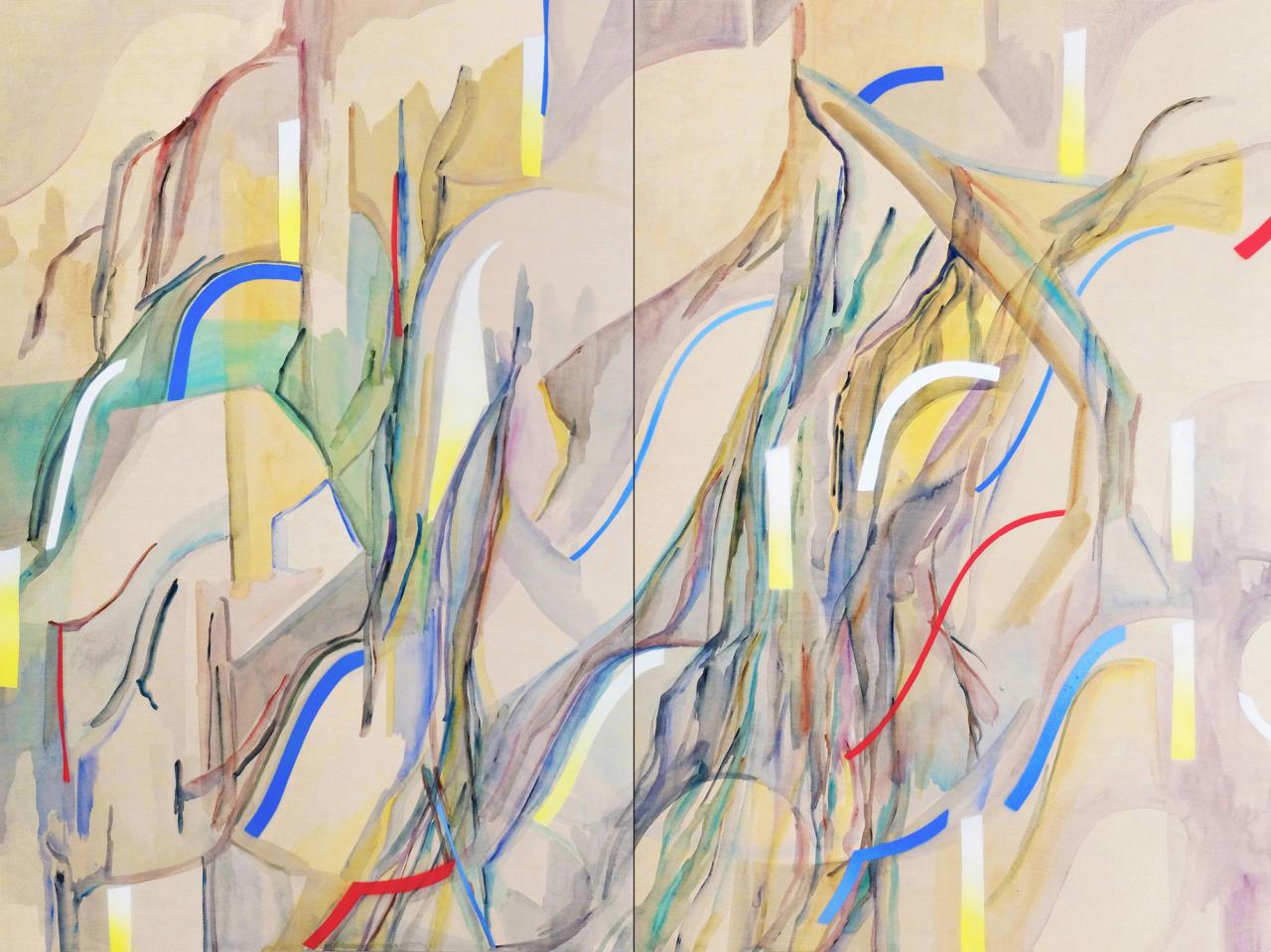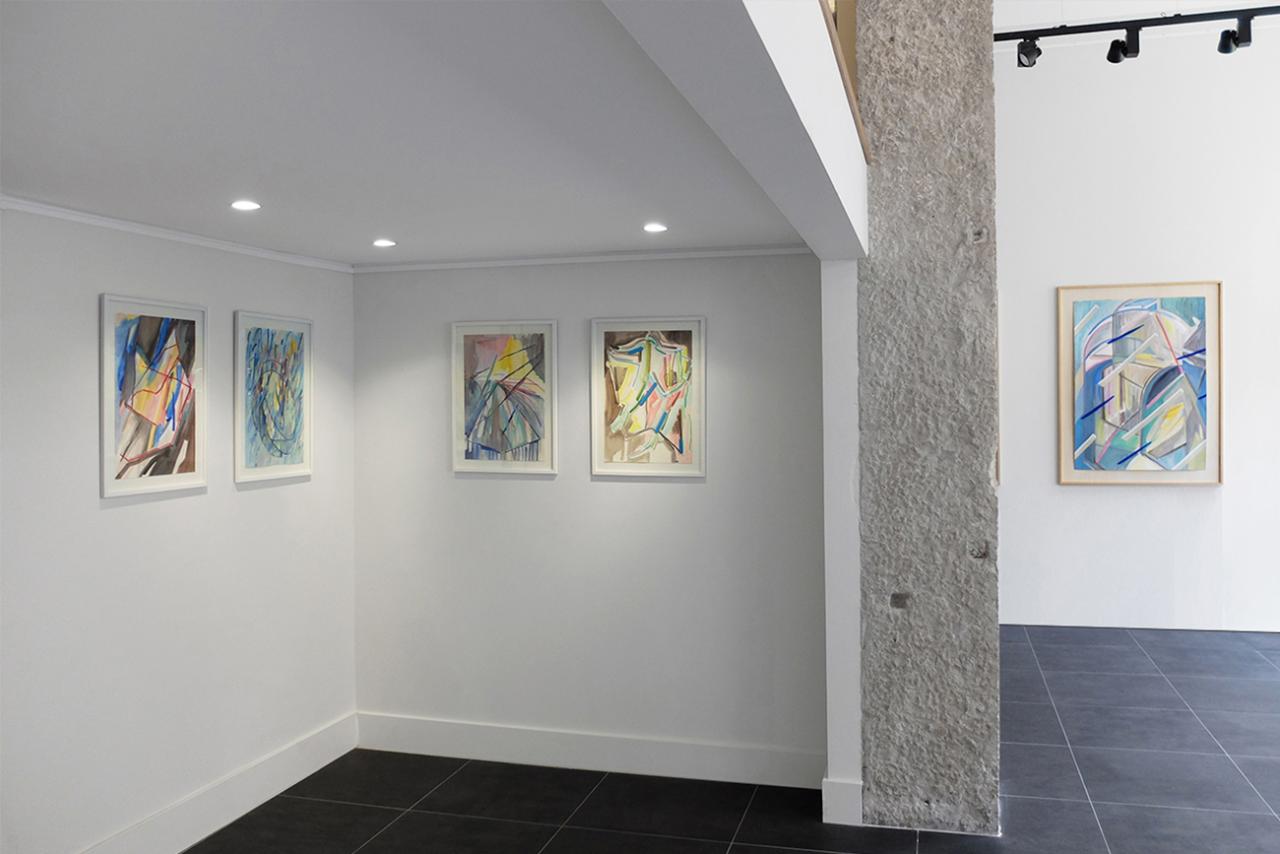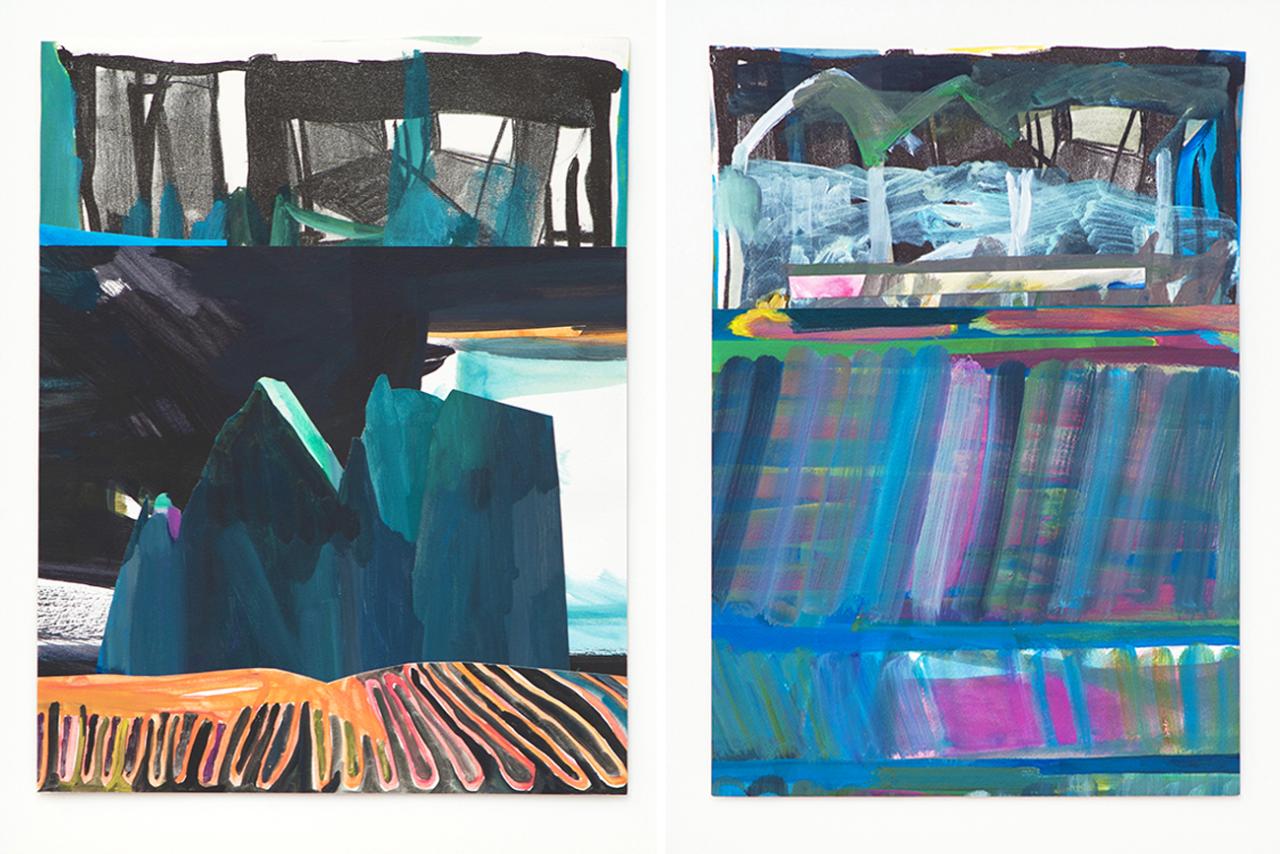Lise Roussel
Born in 1983
Lives and works in Oullins



“Diluted paint dribbles down, bifurcates, criss-crosses the space, thickens on top of itself or transparently overlaps other layers; colours dance together and harmonise with one another in a sort of dark or very vivid ballet… Lise Roussel’s painting seems to have a life of its own, or to have developed an autonomous plastic organisation. […]
A famous topological figure, the Mobius strip, might help us understand how passage and movement are brought into play in Lise Roussel’s paintings. The Mobius strip only has one side, unlike any common surface, which has two. In this case, everything happens on a single surface. There is nothing at the back of Lise Roussel’s painted or pasted papers – no precise meaning, no determined affect, no definite depiction… To be even more precise: as the finger moves along the Mobius strip, or as the brush moves along paper, the underside prolongs and merges into the obverse following a space continuum, an undetectable, imperceptible curve.
This underside could be, for instance, the “viewer’s” projection, their imagination, their invariable search for vaguely recognisable shapes. It could also be the way the artist uses a few outlines to conjure up the suggestion of dwellings, of architectures, of a more or less structured space. And so our eye keeps making its way into suggested spaces, starts to imaginarily become “embedded” in them, only to quickly “fall back” into the painting’s matter itself: a framework of “pure” lines and coloured walls.
Once again, painting takes our vision elsewhere, opens up another space, and so forth… […]
As Lise Roussel puts it herself, drawing and painting instantly open up spaces, trace pathways, “pictorial landscapes”. And yet the artist pushes them further, opens up their interiority to a potential exterior, and creates a tension in the interval between the strictly pictorial landscape and its real or mental counterpart. Through this process, she embarks us on a singular journey from plane to plane, from opening to opening, from plastic rhythm to plastic rhythm, towards a place that exists solely in the painting’s very movement. We thought we could get through to the other side, but the Mobius strip brought us back, if not to the starting point, at least to the materiality of the paper and drawing. So was it a useless journey? An escape into imagination and mental projection that suddenly took us back to the dry land of disillusion? On the contrary, I believe Lise Roussel strives to reduce the imaginary aspect as much as possible, and to block or blur a tendency for over-explicit suggestion… Of course, she does make use of elements of “resemblance”, even going so far as to question their resistance and shatter the visual reflexes they were bound to for centuries of normative depiction and perspective.”
Excerpt from Jean-Emmanuel Denave, Passages, September 2015.
Translated by Lucy Pons